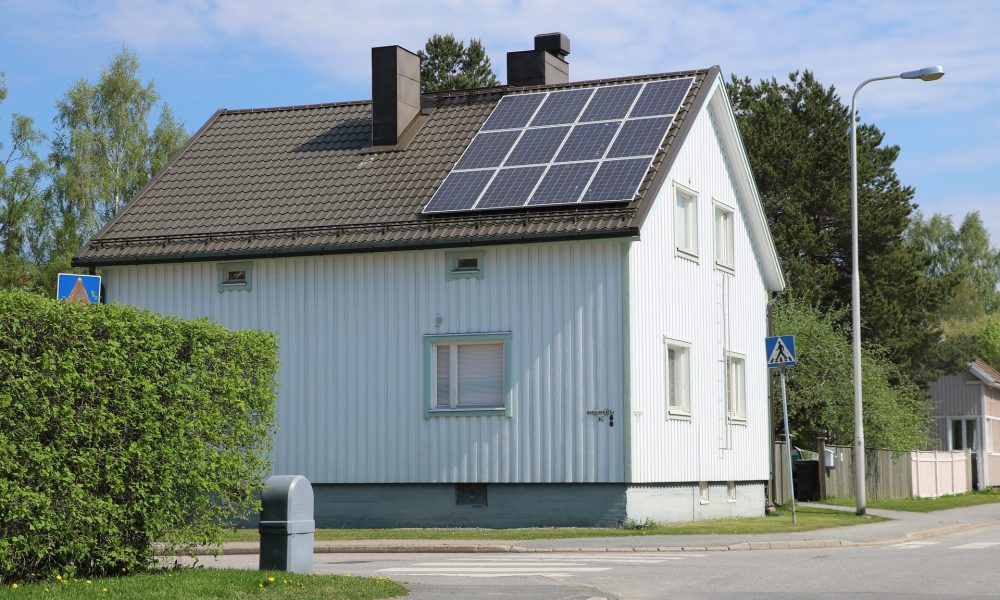We keep hearing about the many benefits of solar power, and how this innovative technology can help to wean us away from the use of fossil fuels, but have you ever stopped to think about how it actually works? The sight of solar panels on the rooftops of our towns and cities is not an unusual one anymore, and in the countryside you’ll even see banks and banks of panels in fields that once grew crops.
You could be forgiven for thinking that solar panels only work with sunshine, and are therefore something of a luxury in the dark and dank United Kingdom. In fact, it’s daylight and not sunshine that gives them life, and here in Britain we get plenty of that, thank goodness. They offer maximum efficiency when the sun’s shining, so they will be more effective in Spain than in Britain, but they’re not entirely redundant when we have a grey, cloudy day.
Now, it goes without saying that daylight is all around us, and of course it doesn’t cost anything. Solar power offers a practical and valuable way to make the most of this wonderful resource, and in recent years the technology behind it has come on in leaps and bounds. Harnessing daylight was once thought as unlikely as trying to catch the wind in your hands, but now it’s a reality. But how?
Picture a future in which you have a series of brand-new panels freshly installed on your roof. What happens next? Well, the process begins when the sun comes up. Daylight will activate the panels; in effect this acts as the switch-on. The photo-voltaic cells, also known as PV cells, will start to absorb energy and then produce an electric current. Now – pay attention, please – this is direct current, or DC, but your home needs alternating current, otherwise known as AC.
Turning DC into AC is as easy as, er, ABC
At this stage, an inverter, a clever little gadget indeed, will turn the DC into AC. The current is then fed into the home’s electrical system and distributed around the property, ready and willing to help you watch TV, charge your phone, cook your dinner, boil your kettle, heat your radiators and illuminate your rooms. As an added bonus, as if you needed one, if you have a surplus of electricity, you can sell some back to the National Grid.
If you’re thinking about installing solar panels on the roof of your home, there are a number of factors that you will have to take into consideration. One of them is the aesthetics; some people really don’t want panels to be visible, but obviously the roof is the best place to capture uninterrupted daylight. It’s perhaps worth remembering that both TV aerials and satellite dishes were once considered unacceptable visually, but they’ve been a common sight on rooftops for many decades.
Another issue is the potential for birds to become trapped under the panels, or to simply use such enclosed spaces to roost, in part because the space under the panels represents warmth and protection to our feathered friends. Some homeowners also install netting at the same time as the panels are fitted, in order to prevent such an occurrence.
Many experts will understandably point out that now is a good time to install solar panels, and who are we to argue? The cost of installation can be offset by the reduction in your domestic energy bills, and if you’re a homeowner it’s estimated that they will add around 4% to the value of your property. Then of course there’s the feel-good factor that comes from knowing you’ve taken a major step in the battle against climate change.
The usage in electricity generated by fossil fuels is dropping significantly, but until we replace the word ’significantly’ with the word ‘dramatically’ we will still have a problem. Renewable energy initiatives have become increasingly common in recent years, and this is clearly a trend that will be with us for a long time. Governments, local authorities, the business community (including Sussex B2B PR specialists like ourselves) and individuals all need to be doing more. Solar panels, whether you like them or not, are surely here to stay.
Rose Media Group, founded by Aneela Rose in 2004, is based in West Sussex. We pay close attention to new initiatives in sustainability, and we continue to bang the drum for renewable energy.










